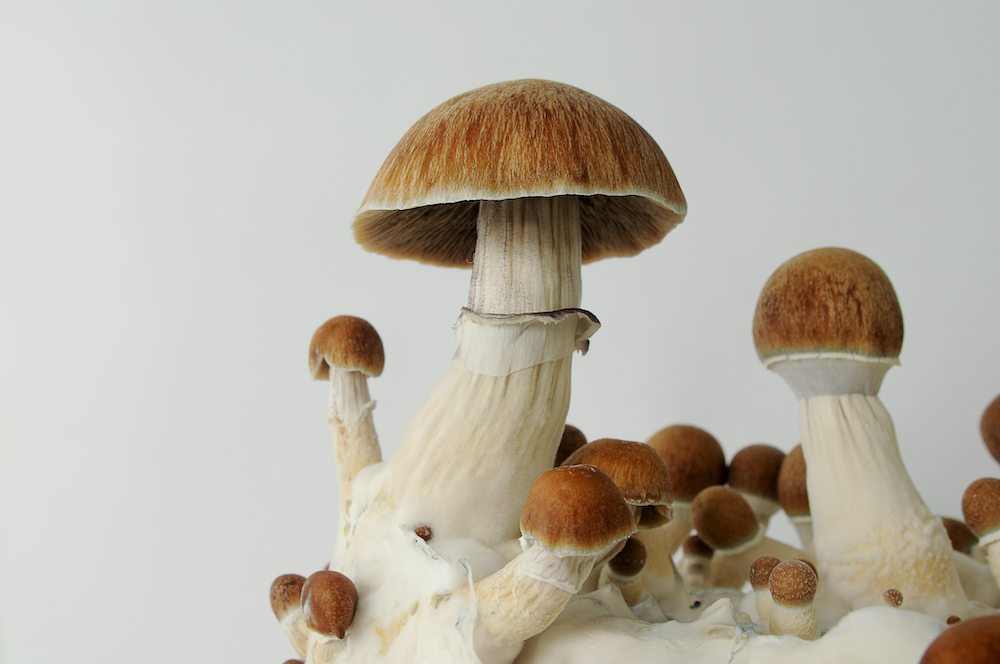Uncategorized
How to Grow Golden Teacher Mushrooms: A Comprehensive Guide to Cultivating Psilocybe Cubensis
Growing your own Golden Teacher mushrooms can be a rewarding and fascinating experience. Known for their golden caps and potent effects, Golden Teacher mushrooms, a strain of Psilocybe cubensis, offer both an intriguing cultivation challenge and a unique journey for those who choose to explore their psychoactive properties. This guide will walk you through everything you need to know to successfully grow Golden Teacher mushrooms, from understanding their biology to the specific techniques required for cultivation.

1. Understanding Golden Teacher Mushrooms
Golden Teacher mushrooms are one of the most popular strains of Psilocybe cubensis, a species of psychedelic mushrooms that contain psilocybin and psilocin. These compounds are known for their mind-altering effects, which can lead to profound spiritual experiences, visual distortions, and changes in perception.
Characteristics:
- Cap Color: The caps of Golden Teacher mushrooms are typically golden or yellowish-brown, sometimes with a slightly reddish hue.
- Cap Shape: They start off convex and gradually flatten out, often developing a slightly wavy edge.
- Spore Print: The spore print of Golden Teachers is purplish-brown.
- Size: These mushrooms are medium to large in size, with caps that can reach up to 5 cm (2 inches) in diameter.
Growing Environment: Golden Teachers thrive in warm, humid environments. They prefer temperatures between 70-80°F (21-27°C) and high humidity levels.
2. Preparing for Cultivation
Before you start growing Golden Teacher mushrooms, you’ll need to gather the necessary supplies and create an optimal growing environment. Here’s a comprehensive list of what you’ll need:
Supplies:
- Spore Syringe or Spore Print: Obtain a Golden Teacher spore syringe or print from a reputable source.
- Substrate: Common substrates include brown rice flour and vermiculite, or pre-made mushroom growing kits.
- Growing Containers: Use glass jars, plastic containers, or mushroom growing bags.
- Sterilization Equipment: Pressure cooker or autoclave for sterilizing substrates.
- Incubation and Fruiting Chambers: An incubator or warm, dark place for colonization, and a fruiting chamber with high humidity.
- Humidity and Temperature Controls: A thermometer, hygrometer, and possibly a humidifier.

Safety Precautions: Ensure all equipment is clean and sterile to prevent contamination. Work in a clean environment and consider wearing gloves and a mask to minimize the risk of introducing contaminants.
3. Cultivation Process
Step 1: Preparing the Substrate
- Mix the Substrate: Combine brown rice flour with vermiculite and water. A common recipe is 2 parts vermiculite, 1 part brown rice flour, and 1 part water.
- Load the Jars: Fill sterilized glass jars with the substrate mixture, leaving some space at the top.
- Sterilize: Place the jars in a pressure cooker and sterilize at 15 PSI for 60 minutes. Allow them to cool completely before inoculating.
Step 2: Inoculating the Substrate
- Prepare the Spore Syringe: Shake the spore syringe well before use to ensure an even distribution of spores.
- Inoculate: In a sterile environment, inject the spore solution into the substrate through the jar’s lid. Use one or two inoculation points per jar.
- Seal and Store: Cover the jars with lids and place them in a warm, dark place (around 75°F or 24°C) for colonization.
Step 3: Colonization
- Monitor: Check the jars periodically for signs of mycelium growth, which appears as white, fuzzy patches. Colonization typically takes 2-4 weeks.
- Contamination Check: If you see any unusual colors or smells, discard the contaminated jars to prevent spreading.
Step 4: Fruiting
- Prepare the Fruiting Chamber: Once the substrate is fully colonized, transfer it to a fruiting chamber with high humidity and fresh air. A common setup includes a plastic bin with perlite or a humidity tent.
- Initiate Fruiting: Expose the substrate to light and slightly lower temperatures (65-75°F or 18-24°C) to trigger fruiting. Mist the chamber regularly to maintain high humidity (around 85-95%).
- Harvesting: Golden Teacher mushrooms are ready to harvest when the caps start to flatten out and the veil beneath the cap breaks. Use a sterile knife or scissors to cut the mushrooms at the base.
Step 5: Post-Harvest
- Drying: Dry harvested mushrooms thoroughly to prevent mold. You can use a food dehydrator or place them in a dry, well-ventilated area.
- Storage: Store dried mushrooms in an airtight container in a cool, dark place to maintain potency.
4. Troubleshooting Common Issues
Contamination:
- Mold or Bacteria: Contamination often results from improper sterilization or poor hygiene. Always work in a clean environment and ensure proper sterilization of substrates and equipment.
Poor Growth:
- Low Yield: This can be due to inadequate humidity, incorrect temperatures, or insufficient air exchange. Make sure your fruiting chamber maintains the right conditions.
Slow Colonization:
- Temperature Issues: If colonization is slow, check that the temperature is within the optimal range and adjust if necessary.
5. Safety and Legal Considerations
Before growing Golden Teacher mushrooms, it’s crucial to understand the legal status of psilocybin mushrooms in your area. In many places, they are classified as controlled substances, and cultivation may be illegal. Ensure you are aware of and comply with local laws and regulations.

Health and Safety:
- Psychedelic Experience: If you plan to use the mushrooms, be aware of the effects and potential risks. Start with a low dose and be in a safe, comfortable environment.
- Consult Professionals: If you have any health concerns or are unsure about the effects, consult a medical professional.
6. Conclusion
Growing Golden Teacher mushrooms can be a fulfilling and educational experience. By understanding the cultivation process and paying attention to detail, you can successfully grow these beautiful and potent fungi. Whether you are interested in their psychoactive effects or simply enjoy the process of mushroom cultivation, Golden Teacher mushrooms offer a unique journey from spore to harvest. Remember to follow safety guidelines, respect local laws, and enjoy the process of growing these fascinating organisms. Happy growing!
This comprehensive guide provides the foundational knowledge needed to cultivate Golden Teacher mushrooms. By following these steps and staying mindful of best practices, you can embark on a successful mushroom-growing adventure.
